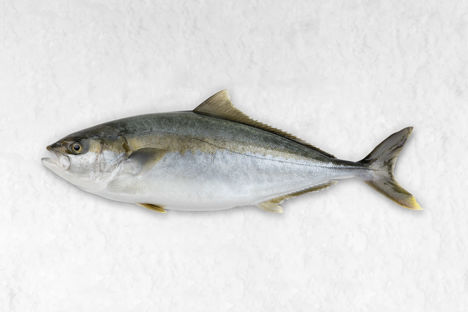
Ingredient focus: yellowtail
Known by an array of different names around the world – kingfish and hiramasa, to name just two – yellowtail is an uncompromisingly delicate and versatile fish. We find out more about its provenance, uses and flavour profile.
Ingredient focus: yellowtail
Known by an array of different names around the world – kingfish and hiramasa, to name just two – yellowtail is an uncompromisingly delicate and versatile fish. We find out more about its provenance, uses and flavour profile.
It may be a name you’ve seen on restaurant menus or perhaps even in the seafood section of a supermarket, but yellowtail, or kingfish (one of the many different names it’s often referred to as), is a fish that many people in the UK aren’t particularly familiar with. As a fish typically grown in the Pacific, yellowtail has been used in countries like Japan for a number of years, but wasn’t widely available in Europe, due to it being unsustainable to transport it here. However, thanks to modern farming methods, it’s now much more widely available in Europe.
With seafood consumption on the up overall as people try to reduce the amount of meat they’re eating, there really is no better time to get acquainted with species you may be less familiar with, and the delicate but versatile yellowtail is a great place to get started. Whether you’re unsure about how to use yellowtail or simply want to find out what it’s known as in different parts of the world, we’ve got you covered.
What are the different names for yellowtail?
You may think that you’ve never tasted yellowtail before, but you may have actually done so without realising as there are actually a few different names for it. On top of this, the term ‘yellowtail’ can actually also refer to two different species, both in the amberjack family.
The yellowtail amberjack (Seriola lalandi), also known as kingfish or hiramasa (as well as being called ricciola in Italy), is typically found in waters in the Southern Hemisphere, though is more commonly farmed these days rather than being caught from the wild. The Japanese amberjack (Seriola quinqueradiata) meanwhile, is also known as yellowtail but is instead native to the northwest Pacific Ocean and is commonly used in Japan under the names hamachi and buri.
In Japan the specific type of fish (i.e hamachi, buri or hiramasa) tends to be used on menus to specify the age and quality/cut of the product, outside of the northwest pacific, yellowtail more often than not refers specifically to kingfish/yellowtail amberjack. People also often confuse yellowtail with yellowfin tuna. Yellowtail is without doubt increasingly being used as an alternative to tuna, but it’s important to note that it’s an entirely different fish, in terms of flavour profile, appearance, sustainability and the way that it’s sourced.
How is yellowtail sourced?
Whilst yellowtail can be caught in the wild, most commercially available fish will have been sustainably farmed by companies like The Kingfish Company in the Netherlands, who have an on-land facility and deliver high-quality, sustainable, antibiotic free yellowtail all over the world, including in Europe. Farmed on land, in tanks directly filled from the pristine surrounding waters of the Oosterschelde, they are carefully raised to give the perfect fish for your plate.
What does yellowtail look like?
Easily identifiable from their distinct yellow fins and tails, yellowtail kingfish have small scales and long, compressed bodies, and can reach up to 1.8m in length, though farmed yellowtail tend to be kept smaller. Their flesh is pale pink in colour and firm in texture, similar to that of a swordfish. When cooked, the flesh of the kingfish lightens slightly and breaks up into large flakes.
What does yellowtail taste like?
The taste of yellowtail is known to be relatively delicate whilst also having a slight sweetness to it, which is one of the reasons it’s often served raw, allowing the subtleties to shine through. A fatty fish with a mild flavour, yellowtail is perfect for grilling and pan-frying and can pair well with many different flavours, as well as being the star of the show all by itself.
What are the different ways that yellowtail can be served?
In Japan, where it’s known as hiramasa, yellowtail is almost exclusively served as sushi or sashimi, and is often found sat on top of nigiri in particular, but there are a multitude of other ways that kingfish can be prepared. Its firm, snappy texture means that it can be cut into meaty steaks, which can then be grilled, or it can be chopped up to form the basis of an aromatic fish curry. It’s this versatility that has led to kingfish becoming a popular choice amongst chefs cooking everything from traditional Japanese food to modern fine-dining dishes.


